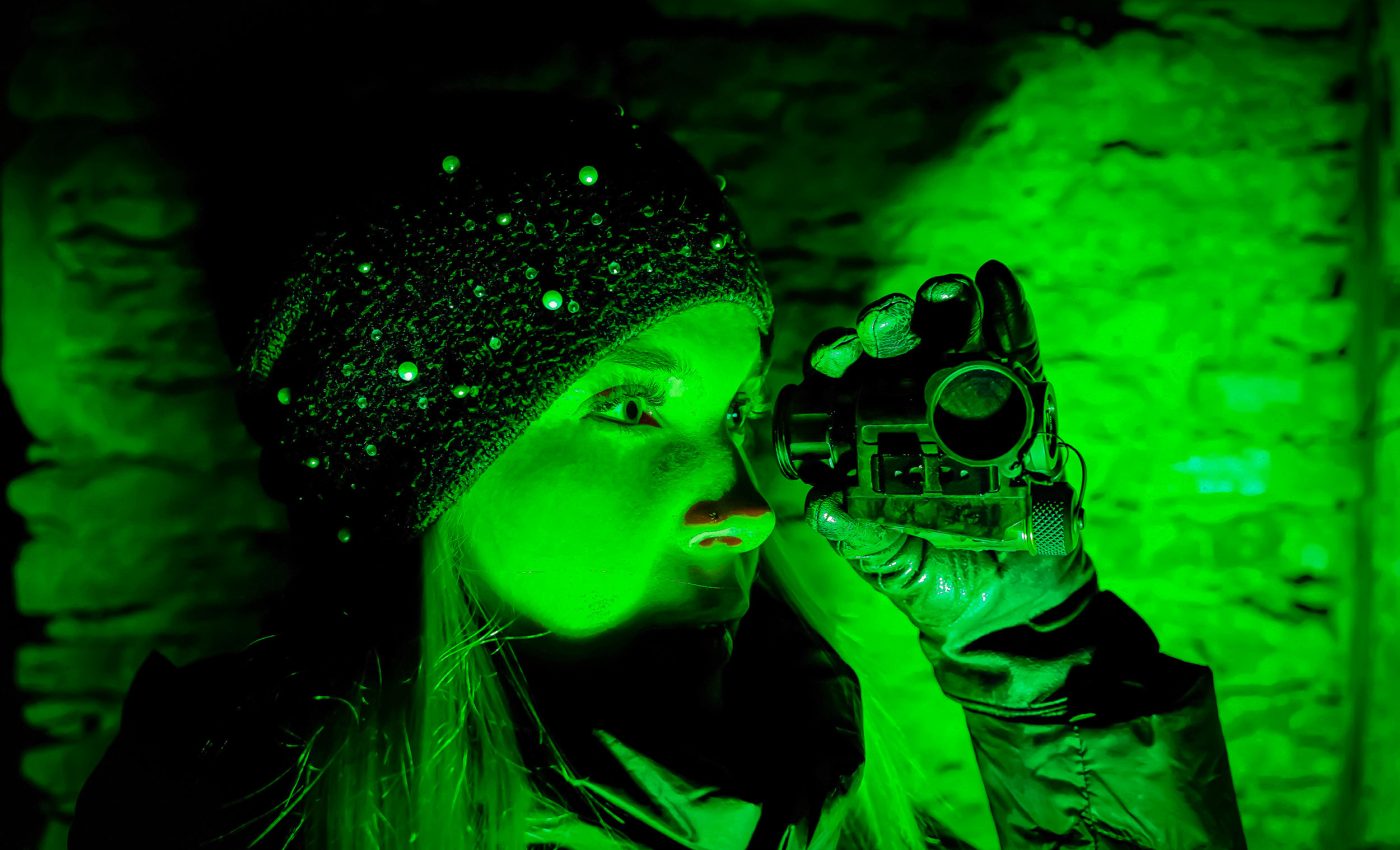
New ultrathin material set to replace bulky night-vision goggles
Night vision gear keeps soldiers and rescuers safe after sundown, yet the gear’s size and weight strain necks and pack space. A Boston research team says that problem might soon end thanks to a heat sensor that is made from a new ultra‑thin film.
Conventional goggles rely on HgCdTe sensors that must be chilled with liquid nitrogen to hush electronic noise, and the cooling units alone can weigh several pounds. That heft discourages use outside the military and drives up costs.
Materials engineer Xinyuan Zhang of the Massachusetts Institute of Technology (MIT) leads the study, working with collaborators from Rensselaer and Seoul National University.
Cooling with no coolers
Pyroelectric detectors respond to temperature swings instead of individual photons, but random atomic motion often drowns their signals.
Zhang’s group tackled that noise by trimming the active layer to ten‑nanometer sheets, thin enough to quiet internal chatter yet sturdy enough to handle field duty.
The sheets are made from ‘pyroelectric lead magnesium niobate‑lead titanate,’ better known as PMN‑PT, a crystal already prized for sonar transducers and actuators.
At room temperature a stack of one hundred sheets outperformed the chilled benchmark across the full far‑infrared band, something no uncooled sensor has done before.
Atomic lift‑off on a chip
The team achieved those sheets with a process called atomic lift‑off, which peels a finished crystal from its growth wafer without an intermediate release layer. Remote epitaxy, the older alternative, uses graphene as a sacrificial buffer and adds cost and time.
“We just had to exert a bit of stress to induce a crack at the interface between the film and the substrate and we could realize the liftoff,” said Zhang.
Lead atoms inside PMN‑PT weaken bonds at the crystal–substrate interface, so a gentle nick lets the film pop free intact.
That trick sidesteps the spalling damage that plagues other lift‑off attempts and delivers atom‑smooth membranes ready for transfer.
Because the sheets come loose in seconds and need neither chemical etching nor exotic buffers, the manufacturing route scales to full‑wafer panels, opening the door to high‑pixel‑count arrays.
Thinner films, better sensors
One of the ultrathin films, just ten nanometers thick, showed a sensitivity far beyond older materials used in thermal sensors.
It picked up heat changes more than 100 times better than some standard options, while working across a wider range of infrared light that traditional detectors can’t see without heavy cooling systems.
“We were trying to achieve performance comparable with cooled detectors,” said Zhang.
In lab tests, the film detected tiny temperature shifts, small enough to outline a person from several football fields away in complete darkness. The chip beneath processed the signals without needing extra power-hungry parts.
Beyond the battlefield
Lightweight thermal “specs” could help firefighters navigate smoke, electrical workers check live lines, and wildlife biologists count animals after dusk.
Automakers watch the work closely because infrared cameras improve pedestrian detection when headlights glare or fog rolls in.
A fingernail‑size uncooled sensor could slide behind the windshield without affecting dashboard design.
Orbiting satellites might pack dozens of the chips for high‑resolution climate mapping, while a stretchable version could monitor skin temperature on smartwatches.
Room-temperature reliability
To see how the material might perform outside the lab, Zhang’s team built a small heat-sensing chip using slightly thicker versions of the film.
Every part of the array worked, and the sensors gave steady, reliable readings across the entire surface.
These test chips were even more sensitive than standard materials used today.
Unlike traditional sensors that need to be chilled and still miss parts of the heat spectrum, this new film worked at room temperature and picked up the full range of heat signals.
Early production hurdles
Despite the promising performance, device fabrication from the thinnest membranes still poses reliability issues.
While 80-nanometer membranes yielded consistent devices across the array, only about 20 percent of the 10-nanometer devices survived handling during transfer and integration.
Zhang’s team is working on process improvements, including protective coatings and automation tools to reduce membrane breakage.
These upgrades aim to make ultrathin sheets more viable for commercial production and large-area sensor arrays in industrial and military settings.
Steps still ahead
The film itself is thinner than a red blood cell, yet lenses, read‑out circuits, and batteries still need space. Zhang’s group is redesigning optics to funnel heat onto postage‑stamp detectors rather than inch‑wide arrays.
“I think night‑vision contact lenses will be challenging to build, but I expect our technology could potentially be used to make something that looks like normal spectacles,” Zhang said.
Further studies aim to replace lead with less toxic elements and to test the lift‑off trick on other ferroelectrics, which could lower environmental impact and diversify applications.
The study is published in Nature.
—–
Like what you read? Subscribe to our newsletter for engaging articles, exclusive content, and the latest updates.
Check us out on EarthSnap, a free app brought to you by Eric Ralls and Earth.com.
—–













